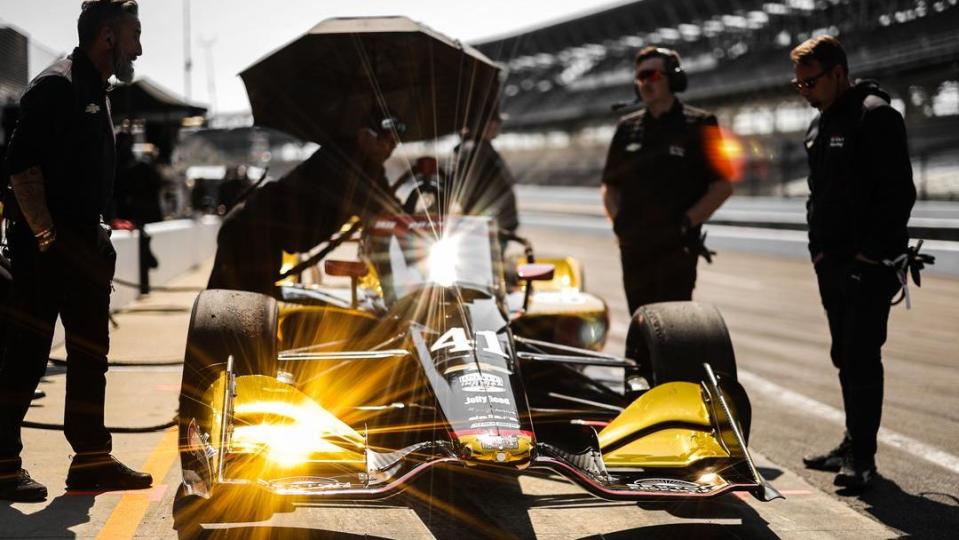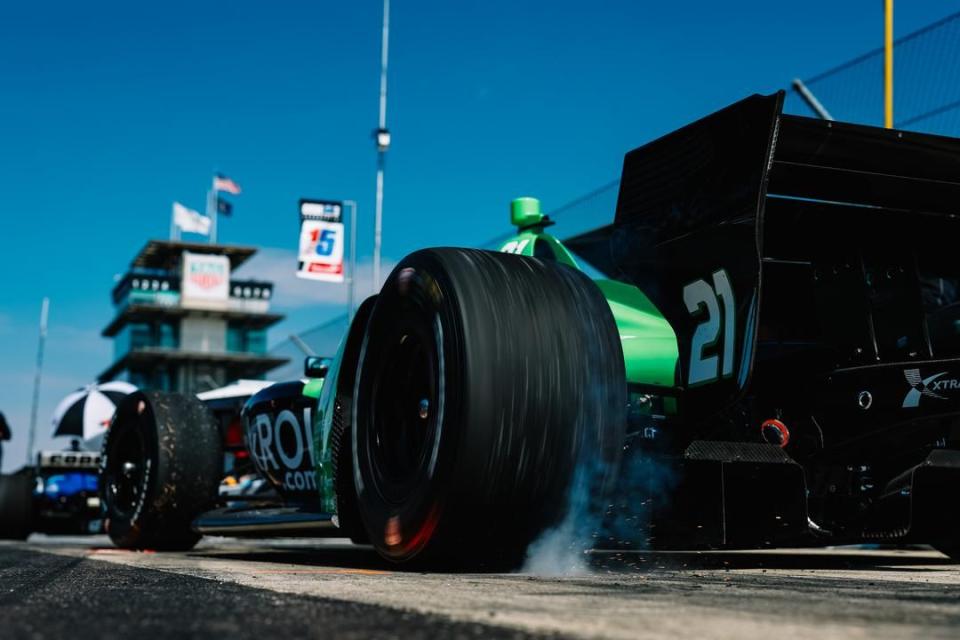NTT IndyCar Series Sets Date for Hybrid Era Debut

Series officials say that Indy cars have put 23,518 miles of testing on the hybrid engines in the past seven months.
Switching power plants in the middle of a season will make the rest of the season a de facto test session of sorts
The next scheduled full-field test of the hybrid power unit is June 11 at Milwaukee.
The NTT IndyCar Series will usher in its hybrid era in July at Mid-Ohio Sports Car Course and the Honda Indy 200.
The series' new 2.2-liter, twin turbocharged V-6 engine developed in a joint venture along with Honda and Chevrolet was paired with hybrid power, and testing began on Aug. 16, 2023 at Sebring. Series officials say that Indy cars have put 23,518 miles of testing on the hybrid engines in the past seven months ahead of the upcoming debut.
The Honda Indy 200 race weekend is set for July 5-7.
Switching power plants in the middle of a season will make the rest of the season a de facto test session of sorts as teams and drivers learn the new technology and how it will react over the course of an entire race or series of races.

The fact that both of IndyCar's engine manufacturer partners collaborated on the development and testing would seem to limit the chance that cars of one manufacturer will have any leg up on the competition when things go live.
"The strength of this uncharted partnership between Chevrolet and Honda has pushed this innovative project to the grid in 2024,” IndyCar president Jay Frye said. “The Indy-specific hybrid power unit will bring a new and exciting element to the NTT IndyCar Series with additional energy and overtake options. We cannot wait to see the start of this new era at Mid-Ohio.”
The new engine unit will feature additional overtake (Push to Pass) options.
According to IndyCar:
The innovative hybrid system is made up of the low voltage (48V) Motor Generator Unit (MGU) and Energy Storage System (ESS) – consisting of 20 ultracapacitors – both of which fit inside the bellhousing, located between the Chevrolet and Honda IndyCar Series internal combustion engine and the gearbox. During regeneration, acting on the clutch shaft, the MGU builds power to be stored in the ESS. The additional horsepower is deployed through the same motor generator on driver demand.
For competition, options for automatic “regen” via braking or throttle position and manual “regen” via selected steering wheel paddles and buttons will be available. Deployment of stored energy will only be available manually through a latching button, similar to the existing Push to Pass system.
While Push to Pass will still have a restriction on amount of time per use and total time used over the course of a race, there will be some new things for drives and teams to be aware of at Mid-Ohio and beyond.
Safety elements include the low voltage system and the ability for drivers to restart the car by themselves if they spin and stall the engine on the track, which should create more green-flag action in races.
“The introduction of hybrid technology provides an opportunity to integrate electrification technologies into the NTT IndyCar Series,” General Motors executive director, Motorsports Competition Eric Warren said. “During the development of any new technology, extensive analysis and testing are done to identify as many issues as possible. We support IndyCar's decisions throughout this process to study testing data carefully and make sure that when the hybrid technology is integrated, the operation and performance are exactly what is expected."
Added Honda Racing Corporation USA president David Salters, “Hybrid technology is playing an ever-increasing role in both our racing programs and the production vehicles created by Honda and Acura. Introducing electrification to IndyCar at Mid-Ohio further aligns our racing efforts with Honda’s passenger car production as we operate multiple manufacturing and R&D facilities in central Ohio, employing more than 13,000 associates there."
The next scheduled full-field test of the hybrid power unit is June 11 at Milwaukee.
Previous testing has taken place at Barber Motorsports Park, Homestead-Miami Speedway road course, Indianapolis Motor Speedway, IMS road course, Milwaukee Mile, Road America, Sebring and World Wide Technology Raceway.

 Yahoo Autos
Yahoo Autos 